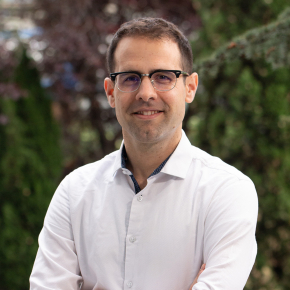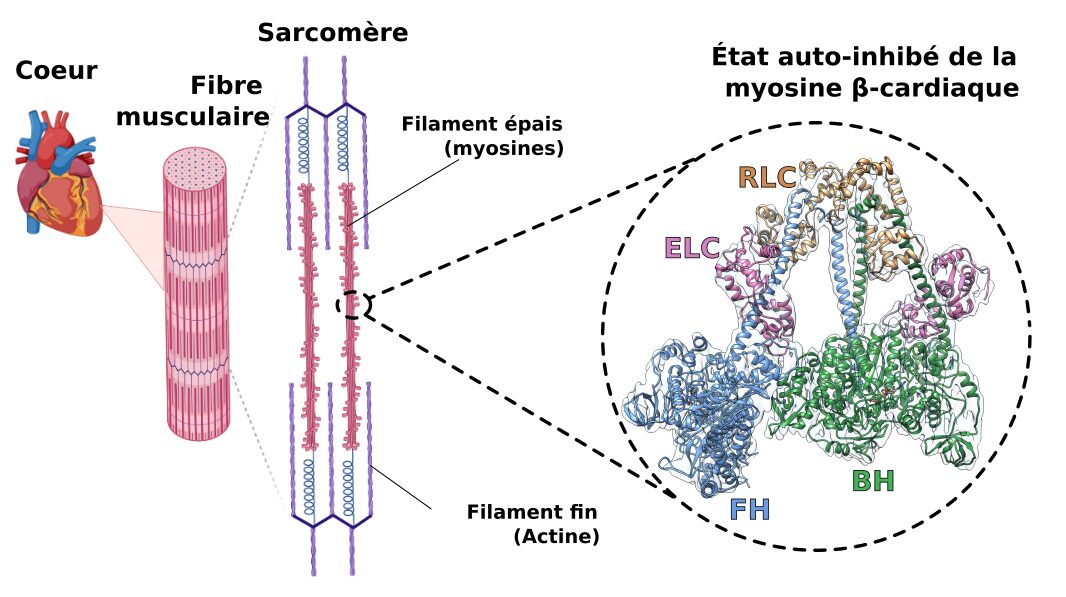Julien Robert-Paganin, a former L3 biology student from Avignon, has been awarded the CNRS bronze medal for his work on molecular motors.
Julien Robert-Paganin, a former student in the Biology degree course at Avignon University, has been awarded the CNRS Bronze Medal for 2025. Now a CNRS research fellow in the Institut Curie's Cell Biology and Cancer Laboratory, he was honoured for his work in structural biology and biophysics.
An exemplary career
After completing a degree in general biology at Avignon University, Julien Robert-Paganin went on to do a PhD at Paris Descartes University, before joining Anne Houdusse's Structural Motility team at the Institut Curie in 2015. It was here that he discovered myosins, the motor proteins that are essential for muscle contraction and cell division and migration.
Recruited by the CNRS in 2019, he is tackling a major scientific challenge: understanding the "resting state" of cardiac myosin. Using cryo-electron microscopy, he is uncovering a hitherto unsuspected mechanism, paving the way for new therapeutic avenues against certain hereditary heart diseases and malaria.

How has your work on cardiac proteins contributed to our understanding of heart disease?
My work initially focused on the regulation of cardiac myosin. Although the force production cycle had been known for years, this myosin also has an inactive 'resting' state, which is central to its regulation but much less well characterised. This inactive state is linked in particular to widespread cardiac diseases: hypertrophic cardiomyopathy (HCM).
We have resolved the structure of the resting state of cardiac myosin at high resolution using cryo-electron microscopy. This will enable us to gain a better understanding of how cardiac myosin is regulated and how it can 'rest' to regulate the force produced by the heart during its function. It will also enable us to study the effect of mutations responsible for hypertrophic cardiomyopathies on this 'resting' state and how they can alter heart function.
At the same time, we also studied and characterised myosin A from one of the parasites responsible for malaria, Plasmodium falciparum (PfMyoA). We have shown that this myosin is required during infection and that its mechanism of force production is very different from that of other known myosins. This work shows that PfMyoA is a first-rate therapeutic target and that it could be targeted in new antimalarial approaches.

See the publication dated 30/06/2023 :
https://curie.fr/actualite/publication/myosine-cardiaque-au-repos-sa-structure-enfin-revelee
What makes this work so original in the current scientific context?
Currently, the two myosins I have studied are linked to common and serious diseases: (i) HCM is one of the most common hereditary diseases, affecting one in 500 individuals, (ii) malaria caused more than 600,000 deaths in 2023. Added to this is the urgent need to find new treatments for these diseases. Our work is paving the way for new therapeutic strategies using small molecules capable of modulating the force produced by myosins. The ultimate aim is to provide the tools that will enable personalised medical approaches to be developed in the future. Thanks to biophysical and structural biology approaches, we have been able to participate in the characterisation of (i) Mavacamten, a cardiac myosin inhibitor currently marketed to treat HCM and (ii) KNX-002, a specific PfMyoA inhibitor.
The methodological originality of this work lies in the coupling of several scales and several approaches. We are studying molecular motors at the atomic scale, but we are collaborating with international teams who are studying the activity of these proteins or using cell biology approaches. We advocate a multidisciplinary and collective approach.
What are your new areas of research and how original are they?
In the future, I want to focus my research on the actin of Plasmodiuma protein that is also involved in force production and interacts with myosins. The aim here too will be to understand precisely how the action of this protein is regulated in the parasite and to contribute to the development of therapeutic molecules that target not only myosins, but also the actin of Plasmodium falciparum to block several of the players involved in the infection.
How important was your initial training in biology at Avignon?
My time at the University of Avignon as an undergraduate gave me a solid and rather general education, as the degree covered a large number of subjects. It opened me up to multidisciplinary approaches and allowed me to explore different aspects of science, whetting my curiosity. It confirmed my vocation and my desire to do research. I was also lucky enough to do several voluntary placements in research teams, which allowed me to see how things work on a day-to-day basis in a laboratory.
In 2026, Avignon University will have the pleasure of welcoming Julien Robert-Paganin for a conference. It will be announced on the university website.
See articles :
Dr Julien Robert-Paganin wins the CNRS 2025 bronze medal
Julien Robert-Paganin, decoding the driving forces of life - CNRS Biology
Updated on 23 September 2025